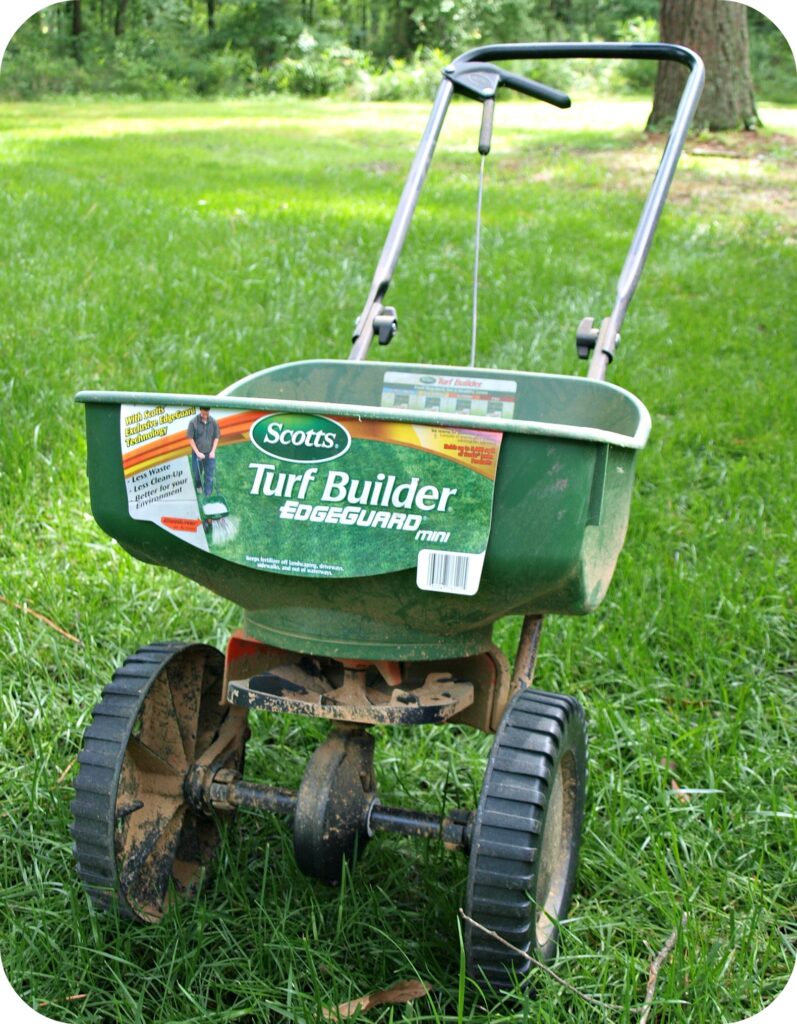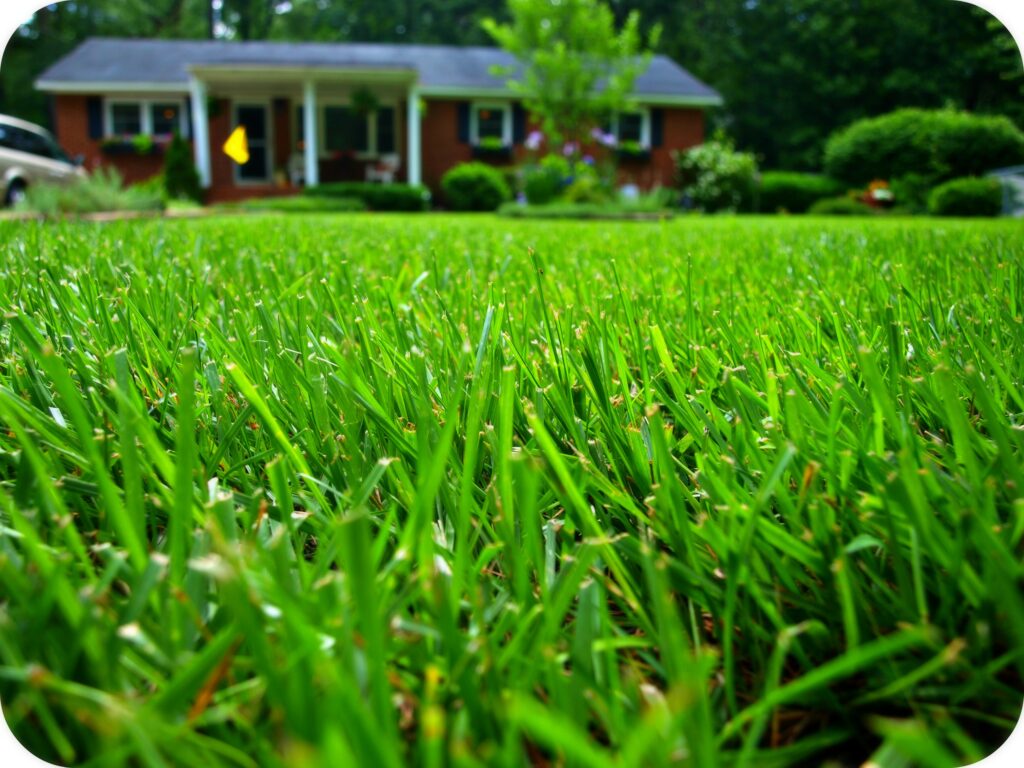
When we first bought our house the yard was really green. It was also all weeds. For the first couple of years, we didn’t do anything to the yard except mow it. We were occupied with renovating the interior of the house, but around year 4 we finally started making our way outside, and we didn’t like what we saw. The “grass” was patchy, inconsistent, and not very comfortable to walk on. With young kids now playing in the yard, we decided it was time to tackle the weeds once and for all. The only problem was we had almost an acre to deal with. Killing the weeds off and re-seeding or planting sod both seemed like a lot of work and a lot of money. Fortunately, we developed a process of overseeding and fertilizing that is so easy that even the laziest homeowner can have a yard that neighbors will envy. I have started this guide in the Fall which is the best time to seed your yard, but you can pick up with whichever season you want.
Early Fall
In early fall (early October for us) take inventory of your yard. Check for low spots that accumulate water and fill them in with soil. Check to see if your yard has a lot of thatch. Thatch is the dead foliage that collects at the soil’s surface. Too much of it will prevent seed from reaching the soil, as well as block sunlight and possibly smoother your new grass. If this is your first time seeding your yard you will probably need to de-thatch and aerate your yard. If you have a small yard you can de-thatch simply by using a thatching rake. Aerating your yard helps loosen the soil and puts small holes in your yard to help seeds and nutrients penetrate the soil. For small yards, you can use spiked aerator shoes or a push spike aerator. For larger yards, you can rent an aerator from Home Depot that takes care of the thatch and aerates at the same time.
I know that all sounds like a lot of work, but it only has to be done every 3 years or so. Once you have your soil ready, it’s time to seed. What type of seed you use will depend on where you live. Go to your local garden center and talk to an expert about what grass is best for your local. Make sure to let them know if your yard is mostly sun or shade. Once you have your seed it’s time to spread it. We use the Scott’s Turf Builder EdgeGuard Mini Broadcast Spreader because it’s cheap and it gets the job done even on our large yard. Follow the directions on your seed package for how to set up your spreader. The seed will need to be watered afterward. I usually try to seed right before I know it will rain. If there is no rain in the forecast you will need to use a sprinkler. Do not seed right before heavy rain or else your seed will wash away or pool.

Ideally, you should re-seed every fall. If you plant fescue grass it only has a life expectancy of 9 months anyways. If you mow every week you will never allow your grass to grow seed pods and re-seed itself naturally, so you will again need to be overseed every fall.
Late Fall
In late Fall (November here) you will need to winterize your yard once all the leaves have finished falling off the trees. Make sure you rake up all leaves before applying. Winterizer will help ensure that your new grass will build strong roots and will help keep your grass green throw the winter.
Enjoy a small break until Spring!
Early Spring
In Early Spring (Late March) you should have nice green grass growing. Now it’s time to Weed and Feed. The weed and feed will continue to keep your grass green while preventing weeds from sprouting. It’s important to get it down before the first weeds come up. Like the seed, the lawn will need to be lightly watered after applying the fertilizer.
Late Spring
In late Spring (or Late May) apply another round of Weed and Feed. Also, if insects are a problem in your area you may want to apply an insecticide. I like to use Ortho Bug-B-Gone because it kills fleas and ticks, both of which are a problem with our dogs. I like to wait at least 2 weeks between applying the fertilizer and the insecticide.
Your lawn will most likely go dormant during the hot summer months, so take a break and enjoy your nice green lawn for the summer.
*These are affiliate links. Any purchase helps support Simply Swider.
Late Summer
In late summer (early September) your grass will begin to grow again in the cooler weather and so will the weeds. Weed and Feed one last time before re-seeding in the fall.
Results
I know that seems like a lot of work, but with the exception of the initial aerating and thatching, each step will only take you a couple of minutes 5 times a year. After the first year of following this plan our grass was much more consistent and stayed green all year, even without water in the summer. By the second year, our grass looked like a golf course. Our neighbor actually paid a company a lot of money to kill off all his grass and – his yard this year. He spent the whole Spring grumbling about how much better our yard looked than his!

So tell me, how do you keep your yard looking green and lush all year?
